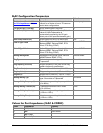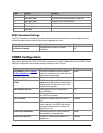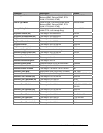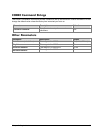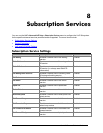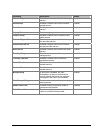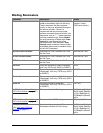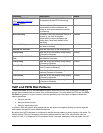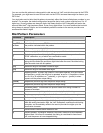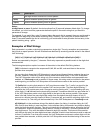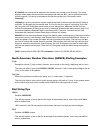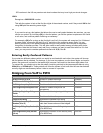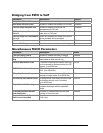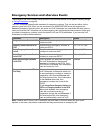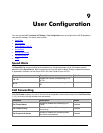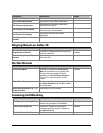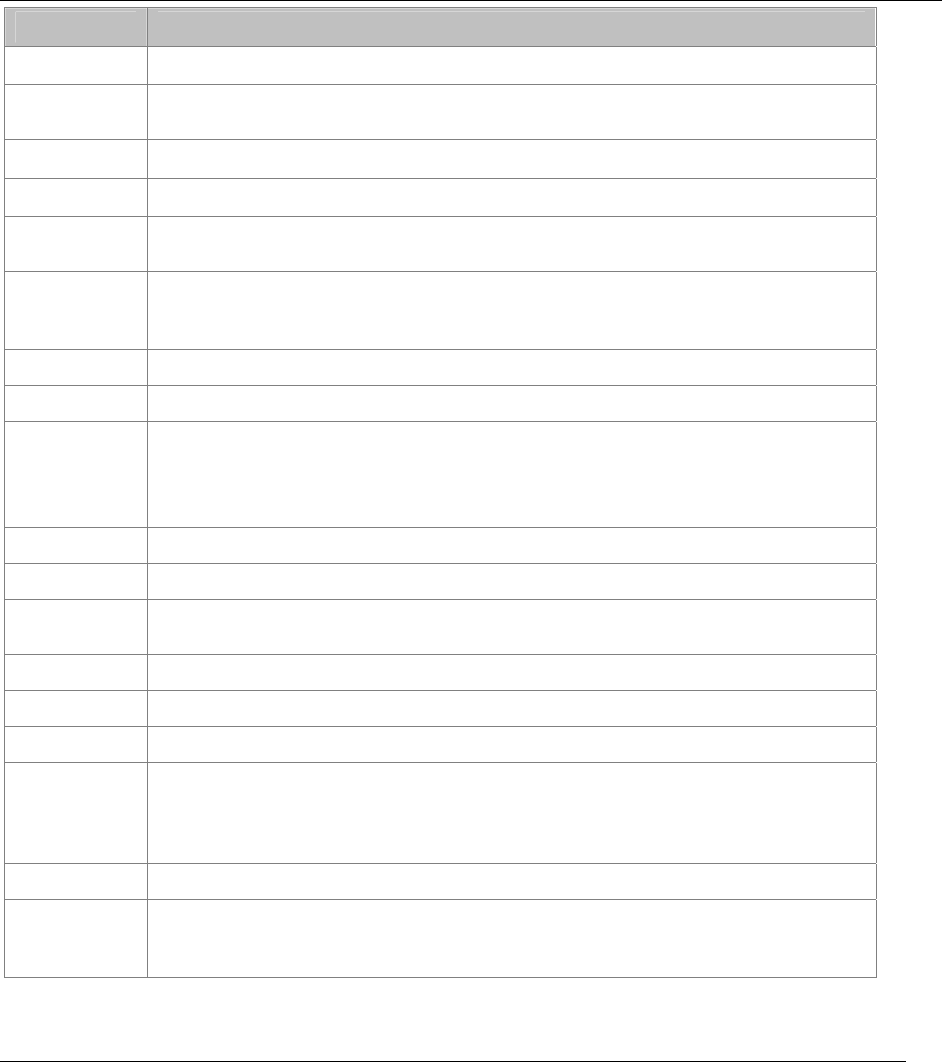
You can use the dial patterns to change which calls are sent via VoIP, and which are sent to the PSTN.
For example, you might want to send all local calls via the PSTN, because these might be free on your
PSTN line.
You might also want to tailor the dial patterns to precisely reflect the format of telephone numbers in your
location. For example, the default configuration recognizes that a local number might be from 5 to 10
digits long. If local numbers are always 8 digits, this means that the VoIP Subsystem will wait a few
seconds after the 8
th
digit has been dialed, to see if any digits follow. You could redefine the local dial
string always to expect 8 digits, and to immediately send the number to the service provider once
someone had dialed 8 digits.
Dial Pattern Parameters
Parameter Description
|
Separates patterns.
Any DTMF char
or chars
Literal list of one or more DTMF characters to match in the order shown, and in
the position indicated within the pattern.
x
Match any numerical digit (0-9)
~
Match any digit (0-9, A-D, *, #) excluding any specified terminators
[]
Selection group of candidate digits. This group can contain any number of
DTMF characters, any of which are considered a match.
[^]
Exclusion group of digits. If any DTMF character occurs at this point in the dial
string which matches the exclusion digits listed after the carat, the dialed string
fails the match test with this pattern.
[0-9]
Selection range of candidate numerical digits
[a-d]
Selection range of candidate letter digits
r
Repeat operator. Syntax r n p, where r is the repeat operator, n is the number
of repetitions, and p is the item that is repeated. n can be 1-9 repetitions, letters
a-z for 10 to 35 repetitions or
* (asterisk), + (plus sign) or . (period) to mean
repeat until the person stops dialing.
.(period)
Repeat the previous digit until the person stops dialing.
+
Repeat the previous digit until the person stops dialing.
!
Disallows pattern. This element can prevent users from dialing numbers or
classes of numbers.
$
Indicates secondary dialing to follow - used only by fixed dial strings.
<:>
Replace group: replace digits to the left of the colon with those to the right.
s
Seize on string as only candidate if dialed digits match to this point.
e
Specify ending termination digit which follows (usually * or #). When the user
dials the ending termination digit, the VoIP Subsystem considers the dial string
complete, and immediately sends to the service provider the digits up to the
termination character.
f
Pause timeout causes failure instead of dial.
p
Pause Operator. Syntax p n, where n is the time in seconds to allow between
digits dialed. If this time is exceeded, the dialing is considered to have timed
out, and the person to have stopped dialing.
38 X6v VoIP Features Technical Reference



